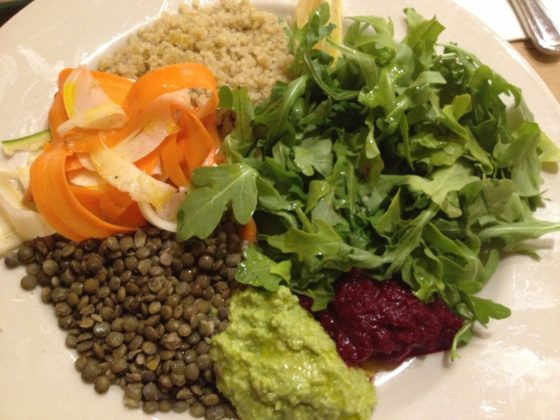
I had the good fortune of sitting in on a “You Are What You Eat” presentation by Talia Segal Fidler.
Talia came to the United States years ago to continue her education. After a few years here, she developed a health condition. One thing led to another and she eventually realized what she was eating was a major contributor to her health problem. By changing what she ate, she was able to reverse the condition.
Because I am a student of healthy eating, much of what she said was not new to me. But, I was very happy to walk away with quite a bit of learning.
Here are some of my favorite takeaways from her presentation, with some paraphrasing by me, and my commentary added:
You can’t stop all diseases, but you can slow them. Eating well is one aspect of preventive medicine. (Not that you should not take prescribed medicine but, while doing so, don’t forget about using nature’s cures at the same time.)
At the end of each fork, you make a choice: to promote disease or to promote health.
There are many toxins in the environment. We do not have a lot of choice about that, but we have a choice regarding the toxins we put into our bodies in the form of food. That boils down to three words: Eat Real Food—food close to the way nature made it.
Shop on the edges of the market. That’s where the foods which are close to the way nature made them reside—foods you recognize, such as eggs, fruits and vegetables, meat, and fish.
Anything with a long list of ingredients is a problem. For example, Wonder Bread, to be softer and gooier, which people like, and in order to have a longer shelf life, is filled with all kinds of things you won’t recognize.
The longer the shelf-life of what we eat, the shorter our shelf-life.
If you can’t pronounce it, your body can’t pronounce it either.
Here’s how white flour came to exist: to preserve wheat, it was processed. The living enzymes, which go bad if not consumed in a short period of time, were removed. As a result, all that was left was the white flour. It had a longer shelf-life, but it was not a food that promoted good health.
Processed foods are filled with S.O.S.—salt, oil, and sugar. Beware of too much of those.
For minimally processed foods, such as tomato sauce, make sure there is a short list of ingredients, perhaps three at most.
Look at the dirty dozen to choose which organic produce to buy, and the clean fifteen you don’t have to worry about buying organic. It’s important to look at these lists every year because they change based on the different pesticides used.
Eat antibiotic-free chicken.
Eat organic eggs, not just free range. The organic eggs have much more nutritional value.
Fat-free often means tons of sugar. Yogurt pre-packaged with fruit has tons of added sugar.
Eat these healthy fats: olive oil, avocado, nuts, seeds, tahini, and fatty fish.
Wild caught is to fish, is similar to what organic is to fruits and vegetables.
Eat the rainbow. Fruits and vegetables with deeper, darker colors are more nutritious. For example, eat spinach instead of iceberg lettuce.
What are some of your healthy eating habits? Please join the conversation with your comments…
Best regards,
David
